Bookworm
Published in Book Reviews, General, Issue 2 (March/April 2013), Reviews, Volume 21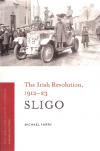 The decade of centenaries has Irish publishers working overtime. Four Courts Press have now launched an ambitious new series of county histories: ‘The Irish Revolution, 1912–23’. The first volume is Michael Farry’s Sligo (€17.50pb, 192pp, ISBN 9781846823022); if it is anything to go by, this will be an elegant, comprehensive and well-produced series. Further books on Tyrone and Waterford are pencilled in for 2013: three down, 29 to go!
The decade of centenaries has Irish publishers working overtime. Four Courts Press have now launched an ambitious new series of county histories: ‘The Irish Revolution, 1912–23’. The first volume is Michael Farry’s Sligo (€17.50pb, 192pp, ISBN 9781846823022); if it is anything to go by, this will be an elegant, comprehensive and well-produced series. Further books on Tyrone and Waterford are pencilled in for 2013: three down, 29 to go!
Not all of the ‘Irish Revolution’ is getting the same level of attention; 1916 and the War of Independence remain natural magnets for authors, but the periods of the ‘Ulster Crisis’ (where are the books on unionists or Home Rulers?) and the Civil War remain neglected. Brian McCarthy’s The Civic Guard mutiny (Mercier, €14.99, 256pp, ISBN 9781781170458) deals with the messy realities of the latter, when 1,200 recruits to the new Civic Guard mutinied and seized a barracks in Kildare over the issue of incorporating former RIC personnel into the new force at the behest of Michael Collins. Mercier are old hands at this sort of thing: they have also reissued a handsome new edition of Ernie O’Malley’s classic memoir of 1916–21, On another man’s wound (€16.99, 448pp, ISBN 9781781171493). O’Malley’s posthumously published Civil War memoir, The singing flame, was reissued last year in the same format.
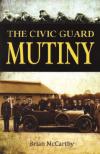 Last year Bookworm was glad to see the arrival of Merrion, a new imprint from Irish Academic Press aimed at the general reader, and since then they have released some handsomely produced and intriguing titles. Readers can get an insight into the thinking of one of twentieth-century Ireland’s most significant figures in Clara Cullen and Margaret Ó hÓgartaigh (eds), His Grace is displeased: selected correspondence of John Charles McQuaid (€16.99, 280pp, ISBN 9781908928092). The same can be said of Gerard MacAtasney’s Tom Clarke: life, liberty, revolution (€16.99, 306pp, ISBN 9781908928078). Despite being the éminence grise of the Easter Rising, Clarke has been left in the shadows by historians. Most of MacAtasney’s book comprises a generous selection of his correspondence, but the introduction, which takes up a third of the whole, is the first major biography of Clarke to be written since the 1930s. Another biography from Merrion is Lucy Costigan’s Glenveagh mystery: the life, work and disappearance of Arthur Kingsley Porter (€16.99, 318pp, ISBN 9781908928115). Porter, a Harvard art historian who owned Glenveagh Castle in north-west Donegal, vanished mysteriously off the Donegal coast in 1933; this lively book gives an account of his life and tries to make sense of his death.
Last year Bookworm was glad to see the arrival of Merrion, a new imprint from Irish Academic Press aimed at the general reader, and since then they have released some handsomely produced and intriguing titles. Readers can get an insight into the thinking of one of twentieth-century Ireland’s most significant figures in Clara Cullen and Margaret Ó hÓgartaigh (eds), His Grace is displeased: selected correspondence of John Charles McQuaid (€16.99, 280pp, ISBN 9781908928092). The same can be said of Gerard MacAtasney’s Tom Clarke: life, liberty, revolution (€16.99, 306pp, ISBN 9781908928078). Despite being the éminence grise of the Easter Rising, Clarke has been left in the shadows by historians. Most of MacAtasney’s book comprises a generous selection of his correspondence, but the introduction, which takes up a third of the whole, is the first major biography of Clarke to be written since the 1930s. Another biography from Merrion is Lucy Costigan’s Glenveagh mystery: the life, work and disappearance of Arthur Kingsley Porter (€16.99, 318pp, ISBN 9781908928115). Porter, a Harvard art historian who owned Glenveagh Castle in north-west Donegal, vanished mysteriously off the Donegal coast in 1933; this lively book gives an account of his life and tries to make sense of his death.
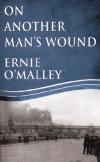 There is much to admire about the GAA, but there are some unsavoury skeletons in the Association’s closet. One of them is the subject of Cormac Moore’s The GAA v Douglas Hyde: the removal of Ireland’s first president as GAA patron (Collins Press, €14.99, 250pp, ISBN 9781848891524). The GAA’s infamous Rule 27—the ‘ban’—is still sometimes used as a stick to beat it with, despite the fact that it was rescinded in 1971. The origins of Rule 27 lie in the early days of the Association, when it was formulated as a ruthless means of staving off competition from other sports. In the face of British hostility to the GAA, attachment to the nationalist ethos of the Association became more pronounced, and in independent Ireland Rule 27 became an article of faith for some members. When the GAA’s patron, President Douglas Hyde, attended a soccer match between Ireland and Poland in Dalymount Park in 1938 he was expelled from the organisation. The irony, for want of a better term, of the GAA giving the boot to the man who called for the ‘de-Anglicisation’ of Ireland—and the president—is obvious. Moore’s book sheds a good deal of light on Hyde, the GAA and the cultural mores of the Free State. Incidentally, Ireland beat Poland 3–2 in the offending match.
There is much to admire about the GAA, but there are some unsavoury skeletons in the Association’s closet. One of them is the subject of Cormac Moore’s The GAA v Douglas Hyde: the removal of Ireland’s first president as GAA patron (Collins Press, €14.99, 250pp, ISBN 9781848891524). The GAA’s infamous Rule 27—the ‘ban’—is still sometimes used as a stick to beat it with, despite the fact that it was rescinded in 1971. The origins of Rule 27 lie in the early days of the Association, when it was formulated as a ruthless means of staving off competition from other sports. In the face of British hostility to the GAA, attachment to the nationalist ethos of the Association became more pronounced, and in independent Ireland Rule 27 became an article of faith for some members. When the GAA’s patron, President Douglas Hyde, attended a soccer match between Ireland and Poland in Dalymount Park in 1938 he was expelled from the organisation. The irony, for want of a better term, of the GAA giving the boot to the man who called for the ‘de-Anglicisation’ of Ireland—and the president—is obvious. Moore’s book sheds a good deal of light on Hyde, the GAA and the cultural mores of the Free State. Incidentally, Ireland beat Poland 3–2 in the offending match.
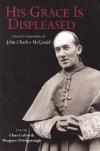 The latest (Vol. XXXVIII, No. 150, Nov. 2012) issue of Irish Historical Studies arrived recently. It is slightly larger than usual, with articles ranging from the 1540s to the 1940s and a generous helping of book reviews. Readers of History Ireland might take note of John Borgonovo’s article on ‘Revolutionary violence and Irish historiography’, a lengthy and fair-minded review of David Fitzpatrick’s (ed.) Terror in Ireland (reviewed in our May/June 2012 issue). Naturally, this comes to the seemingly endless debate about the work of the late Peter Hart and the Kilmichael ambush. It is a debate that Borgonovo himself has contributed to, but considering the vitriol that others directed at Hart both before and after his untimely death, it is worth quoting Borgonovo’s generous and sensible tribute to him:
The latest (Vol. XXXVIII, No. 150, Nov. 2012) issue of Irish Historical Studies arrived recently. It is slightly larger than usual, with articles ranging from the 1540s to the 1940s and a generous helping of book reviews. Readers of History Ireland might take note of John Borgonovo’s article on ‘Revolutionary violence and Irish historiography’, a lengthy and fair-minded review of David Fitzpatrick’s (ed.) Terror in Ireland (reviewed in our May/June 2012 issue). Naturally, this comes to the seemingly endless debate about the work of the late Peter Hart and the Kilmichael ambush. It is a debate that Borgonovo himself has contributed to, but considering the vitriol that others directed at Hart both before and after his untimely death, it is worth quoting Borgonovo’s generous and sensible tribute to him:
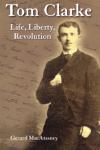 ‘Hart’s often brilliant scholarship transformed debate about the Irish Revolution. His personal qualities ensured his high standing among friends and colleagues. The Irish historical profession rightly mourned his premature death. Questions about Hart’s Kilmichael research are uncomfortable, especially now that he can no longer defend himself. Unfortunately for Hart’s reputation, he failed to adequately explain the serious discrepancies in his research noted in the decade preceding his death. It is difficult to envision a satisfactory resolution to Hart’s mysterious attributions. It is equally difficult to see how their continued examination will expand our understanding of the Irish Revolution. Kilmichael need not claim any new victims’ (p. 330).
‘Hart’s often brilliant scholarship transformed debate about the Irish Revolution. His personal qualities ensured his high standing among friends and colleagues. The Irish historical profession rightly mourned his premature death. Questions about Hart’s Kilmichael research are uncomfortable, especially now that he can no longer defend himself. Unfortunately for Hart’s reputation, he failed to adequately explain the serious discrepancies in his research noted in the decade preceding his death. It is difficult to envision a satisfactory resolution to Hart’s mysterious attributions. It is equally difficult to see how their continued examination will expand our understanding of the Irish Revolution. Kilmichael need not claim any new victims’ (p. 330).
Irish Historical Studies remains Ireland’s leading academic history journal, but something really needs to be done about the drab green cover, which is essentially unchanged since the journal was launched in 1938. Details on subscriptions for 2013 (€50 for two issues) are available at www.irishhistoricalstudies.ie.
















